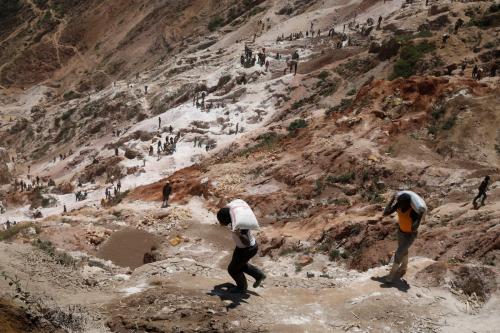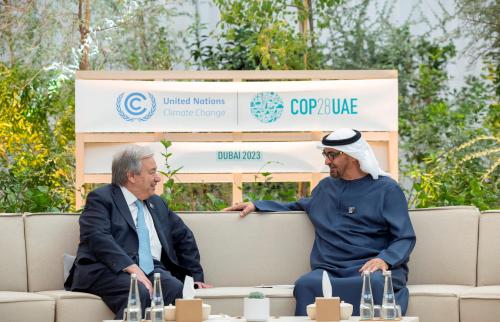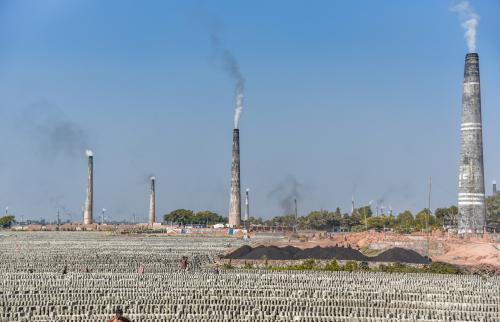This is a case study about the relocation experience of 18 families that were resettled in Kananke Watta, in Matara District, Sri Lanka, following the Indian Ocean tsunami of 2004. Sixteen of these families originally lived very close to the sea. They were relocated to Kananke Watta, a bare land located in the interior, which was converted into a resettlement site after the tsunami. The remaining two families moved in later, one having bought property there and the other renting it from the original owners.
In the immediate aftermath of the disaster, the displaced families were moved to evacuation shelters for their safety. The families took shelter in Punchi Pansala, Talalla, where they received food and clothing, initially from the host community, and later from many local and foreign donors.
The journey to relocation was two-phased. Following a three to four month stay at the village temple, which served as an evacuation center, the families were moved to a site near Talalla Rural Hospital, where transitional homes were constructed for them. Compared to life in the temple, the transitional homes were better as people had the freedom to cook their own meals and enjoy more privacy.
The resettlement of families displaced by the tsunami was a top priority for the government. However, the task was complicated by the implementation of a ‘buffer zone,’ which prohibited construction within 100 meters of the coastal line in order to protect inhabitants from a repetition of the disaster. In an effort to resettle these 18 families, the government purchased a 1.75 acre plot of land in Kananke Watta that was located 1.5 to 2 kilometers inland from the pre-tsunami homes of the displaced families. The International Federation of Red Cross and Red Crescent Societies (IFRC) drew up housing plans for 46-square meter houses, conforming to the minimum requirements set by the government. The houses included two rooms, a living hall, kitchenette, and a bathroom complete with electricity and water supply. After government authorities approved the plans, a private firm that had won the contract through a bid request from the IFRC carried out the construction.
Beneficiary selection for the new housing was carried out by the government, primarily by the Grama Niladhari, the local government official on the ground in Talalla Central. Designation of beneficiaries was based on three criteria: 1) whether the house was completely or partially damaged; 2) whether the house was within or outside the buffer zone; and 3) if the house was in the buffer zone, whether the displaced family owned another piece of land. Based on these criteria, the 18 families qualified for donor-financed housing in Kananke Watta. Families that had experienced loss of family members and those whose homes had been located within 30 meters of the coast were given priority in the beneficiary selection process.
The project at Kananke Watta was a donor-driven housing scheme and thus experienced several weaknesses that did not occur in owner-driven approaches. In donor-driven schemes, the potential home-owner was, to a great extent, excluded from the decision-making process, while in an owner-driven system, the home-owner played an active role. Although the government was able to swiftly identify land for the relocation site, the IFRC believed that the land was not suitable for the construction of houses. The process of upgrading the land ended up consuming a significant portion of the IFRC budget allocated for the project – funds that could have been applied to the construction of houses had the land been readily usable.
The beneficiary selection process also appears to have been flawed, as the government relied heavily on the then-Grama Niladhari for information on displaced families and for making decisions about who should be relocated. This over-reliance on a single official created an opportunity for him to play favorites, resulting in an abuse of power. Even when the displaced families were at the temple, Punchi Pansala, the then-Grama Niladhari had influenced the distribution of aid by the head priest of the temple so as to prioritize support for those families he identified. Both the host community, who are mostly neighbors of Kananke Watta, and the relocated families at Kananke Watta agreed that the lack of direct contact between the affected families and government officials of higher rank was the main reason that the Grama Niladhari was able to have such a free hand in the beneficiary selection process.
Of the 18 families selected for the Kananke Watta site, 16 had been neighbors before the tsunami. Housing was distributed on a random basis with beneficiaries drawing lots for specific sites. This process enabled an objective distribution of housing, randomizing who got a house closer to the main road and who did not. The families who had been engaged in fishing at night were most dissatisfied with the resettlement. Although their resettlement homes, according to both the host community and local government officials, were a marked improvement over their pre-tsunami dwellings, these families found it inconvenient to maintain their livelihoods from their resettlement location. They also felt socially excluded in comparison to the way they had lived before the tsunami. However, families not engaged in night-time fishing did not have many complaints about being relocated to an inland site.
One of the main policies that baffled the Kananke Watta residents was the government’s decision to change the buffer zone from an initial 100 meter to 200 meter reference line down to one measuring only 35 to 55 meters. This change meant that some families were now eligible to own two homes: their original pre-tsunami home (or at least the land upon which it had been built) and a second donated home located outside the buffer zone. This meant that some beneficiaries were better off after the tsunami, creating feelings of unfairness among the displaced families.
All of the relocated families were unhappy with the low quality of their new houses, which they blamed on shoddy workmanship and sub-optimal material used by the contractors who built the houses. Although the IFRC addressed some of these issues during the first year of resettlement, the houses were far from solid. The lack of communication between the displaced families, the government, and the IFRC was identified as a primary cause of the inferior quality of housing in Kananke Watta.
Overall, the Kananke Watta experience offers many insights into factors that are important to consider when approaching the issue of relocations following disasters. One of these insights is recognition of the importance of communication between different stakeholder groups, not only to ensure better decisions but also to make everyone feel included in the decision-making process. Consistency in decision-making is important to minimize confusion and resistance to change. The availability of credible data also allows for transparency in decisions about resettlement, and prevents reliance on a single source that may not be accurate and objective. The importance of objective criteria and consistent implementation in beneficiary selection cannot be over-emphasized. When selection is seen as subjective, the resettlement system is undermined. Most importantly, there should be long-term monitoring mechanisms put in place by the government to support and sustain those families resettled as a consequence of disasters.



